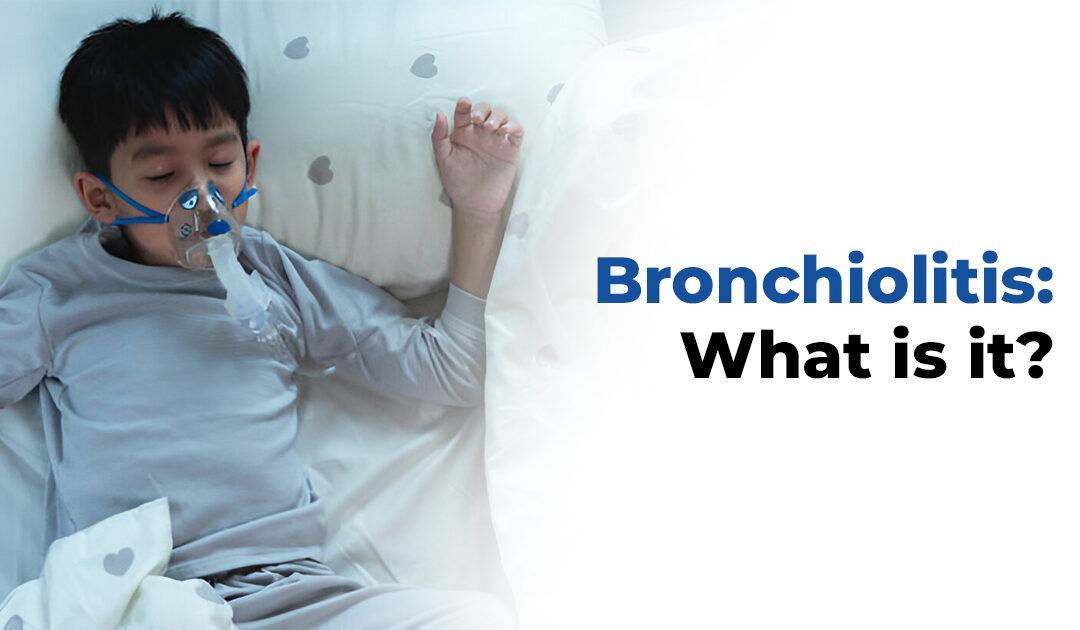Bronchiolitis is a viral infection that affects children under the age of two. It is a seasonal infection that narrows your child’s airways (bronchioles), making breathing difficult. If your child develops this illness, you may notice symptoms comparable to a typical cold (runny nose, cough), as well as noisy breathing (wheezing), often occurring during the winter and early spring seasons.
Bronchiolitis is not often serious, although it can be. If your child becomes infected, monitor their breathing and contact a doctor if they have difficulty breathing.
The bronchiolitis viruses are infectious. These viruses spread via respiratory droplets (saliva or mucus) from a person’s mouth or nose.
What are some symptoms of Bronchiolitis to keep an eye out for?
Early symptoms of bronchiolitis resemble those of a regular cold, including:
- A runny nose.
- A mild fever.
- A cough.
- Fatigue.
- Fussiness or irritability in babies.
A bronchiolitis infection severely attacks your child’s airways and can produce the following symptoms that impair their breathing:
- Rapid or shallow breathing.
- Wheezing.
- They make grunting noises when breathing.
- The nostrils have flared.
What are the causes of bronchiolitis?
A virus is responsible for bronchiolitis infection. Bronchiolitis can be caused by the following viruses:
- RSV stands for Respiratory Syncytial Virus.
- The Influenza virus, the one that causes the flu
- Adenovirus.
- Parainfluenza.
- Metapneumovirus.
- SARS-Cov-2 (the COVID virus).
What are the risk factors for developing bronchiolitis?
Your child may be more likely to get severe bronchiolitis if they:
- Were born before 37 weeks gestation.
- Have a congenital (born with) lung or heart problem.
- Have a compromised immune system.
- Live or play in groups, such as at a daycare.
What are the possible complications of bronchiolitis?
Complications of bronchiolitis include:
- Pneumonia.
- Asthma.
- Respiratory failure.
Is it possible to prevent bronchiolitis?
Bronchiolitis is difficult to prevent since the viruses that cause it are so frequent. You can decrease your child’s risk of developing bronchiolitis by:
- Avoiding those who are unwell.
- Proper handwashing.
- Washing and sanitizing commonly handled surfaces or objects, such as toys.
- Avoid sharing cups, forks, or spoons.
When do you see a doctor if your child has Bronchiolitis?
If your kid experiences any of the following symptoms, get medical assistance straight away:
- Low oxygen levels cause blue or gray skin, lips, and fingernails.
- Your baby struggles to breathe and is unable to speak or weep.
- Your baby refuses to drink enough, or breathes too quickly to eat or drink.
- Your baby breathes rapidly—in infants, this can be more than 60 breaths per minute—with short, shallow breaths.
- Your baby can’t breathe easily, and when they breathe in, their ribs seem to suck inward.
- When they breathe, your baby makes wheezing sounds.
- Each breath produces a grunting sound.
- It appears that your baby is moving slowly, weakly, or exhausted.
Parents may be concerned about bronchiolitis, a common respiratory ailment in children under the age of two. While it seems like a cold with a runny nose, cough, and fever, it really inflames the tiny airways (bronchioles), making breathing difficult. This might be seen as wheezing, fast breathing, and even grunting sounds. Although most occurrences are minor, diligent monitoring is essential. If your child shows signs of extreme struggle, bluish skin, or difficulty eating or drinking, get medical attention immediately. Remember that bronchiolitis is frequently transmitted through respiratory droplets, so frequent handwashing, avoiding close contact with ill people, and practicing proper sanitation can all help lower the risk of infection. If you have any questions or concerns about your child’s breathing or suspected bronchiolitis symptoms, speak with a doctor right away. Early diagnosis and proper care can ensure a speedy recovery for your little one.

